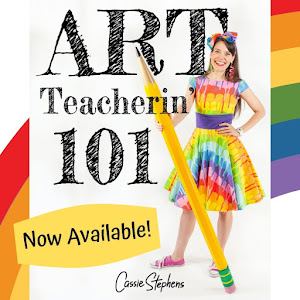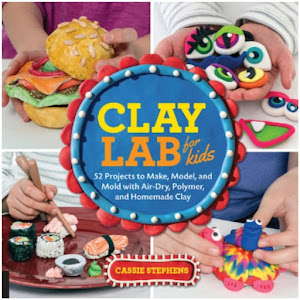 |
| Woven pouch created by one of my fantastic fourth graders. |
Hello, crafty kids and grown-ups alike! Today I am going to show you how to add a flap to your woven pouch. If you've no idea what I'm talking about, you can quickly get caught up to speed by reading Weaving, Part 1. I do hope you'll join in on this weaving adventure. Ready to start? Okay, let's weave a flap!
You know you are ready to weave the flap when your weaving is at your desired height. I tell the kids that their weaving must be between 4-7", no taller, no smaller. Once there, you might want to trim those pesky pieces of yarn you tied together so your weaving looks a little less, er, hairy. The above is my trimmed-up, desired-height pouch.
For flap weaving, you will only be weaving on one side of your loom, not all the way around as you have been. Your first step will be to pick a side to weave your flap on. It does not matter which.
For pouch weaving, you will need to eat a delicious popsicle, stat. Preferably something chocolate. Rinse well. Weave your popsicle stick into your weaving, making certain to weave the opposite of the previous string. See above.
Now rotate your stick so that it lifts up every other string. Simply slide your needle into this string tunnel. This is where the kids Freak Out:
"What?!"
"Why haven't we been doing this the whole time?!"
"That is sooooo cool!"
Pull your needle all the way through so there is no excess yarn just like above.
Flip the stick down and use it to pack the weaving down. This means no more fork to pack the weaving. The kids like to refer to it as the "weaving guillotine". Where do they get this stuff?
Slide your guillotine, er stick, to the top of the weaving. Do not remove the stick. If you already did (tried to jump ahead, didn't you? Humph!) just reweave the stick back into your weaving. And don't do that again.
Remember, we are only weaving on one side of the loom. This means our needle will be going back and forth across our loom instead of around the loom. So, for this next step, you will not be turning your loom over but making a u-turn and weaving back. Notice I am not using the stick (I'll explain why in a moment). Be certain to weave in a pattern that is the opposite of the previous string.
Pull yarn all the way through at an arch. This will prevent some terrible thing called Draw In. More on that shortly. Slide your weaving stick down and pack the yarn.
Ewww, this is bad! This is that dreaded thing called Draw In. This happens when the weaver is pulling too tightly. The year before my fourth graders tackle this weaving, we create a tapestry weaving. That's fancy talk for weaving on one side of the loom. This gives them lots of practice at avoiding and fixing draw in. You can see those weavings here.
The best way to avoid draw in: don't draw in. Stop pulling so hard when you are weaving back and fourth. Pull the yarn at an arch, like I showed earlier. The best way to fix draw in: remove it. That's right, unweave the unwanted. This might leave the end warp strings on the left and right loose making it difficult to avoid draw in again. If you notice that, turn your weaving over, pull up the slack on those strings and tape them taunt. Flip your weaving back to the flap side and resume flap weaving. Fleaving. Wlapping. Call it what you like.
And viola! Finished flap! I tell the kids their flap should be around 2" in height.
 |
| A sunglasses holder by a fourth grader. |
Feel pretty good? Easy enough, right? Feel free to ask questions if you've got 'em. Next week I will show you how to remove your weaving and add a button. From there, we'll weave a cord which is the kid-crowd favorite. Happy weaving!







































































